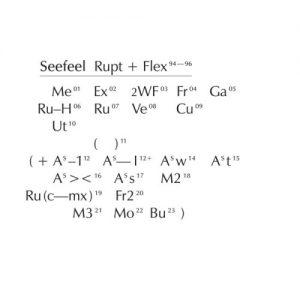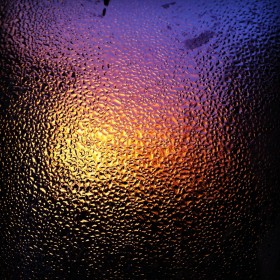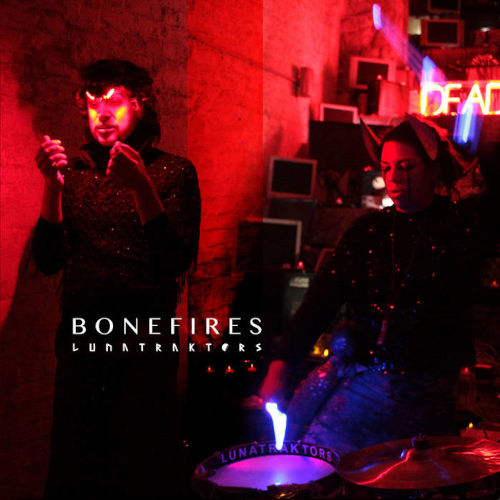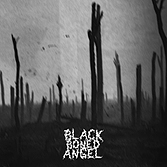 It is not before time that Warp has chosen to compile the work that Seefeel produced for them. For me, Seefeel are one of the most important and overlooked bands of the nineties, managing to skirt around a number of genres without stepping directly into them, blazing a trail for a lot of artists who wanted to merge the burgeoning IDM sound with a guitar-based aesthetic.
It is not before time that Warp has chosen to compile the work that Seefeel produced for them. For me, Seefeel are one of the most important and overlooked bands of the nineties, managing to skirt around a number of genres without stepping directly into them, blazing a trail for a lot of artists who wanted to merge the burgeoning IDM sound with a guitar-based aesthetic.
After having released a lovely and unexpected first album Quique on cooler than cool label Too Pure (home to Stereolab, Th’ Faith Healers, PJ Harvey, Moonshake, etc), they bravely signed to what was then the resolutely dance-inflected label Warp, bringing with them their group sensibility, but cutting it with the sense of wonder that comes with bedroom experimentation. The limitlessness of digital technology and a love of samplers and the expansion that they offer would lead to the two EPs, LP and mini-LP that are compiled on Rupt & Flex. The fact that Warp has also unearthed a whole load of previously unheard gems makes this an essential purchase, either as the four-disc set or as the separate LP pressings.
The first disc comprises the sole Warp LP, Succour, which was such a gamechanger for the band and for the label, one which found them in places successfully merging the unlikely genres of ambient and industrial, amongst others. I remember catching them supporting this at a Spiritualized gig and it was their clean, distant and utterly insistent sound that I took away, even considering how good Spiritualized were at that point. The album made good the promises of the live show and managed to push the already skybound sound of Quique right into the stratosphere, to a thinning atmosphere far above their peers. The two opening racks really set out their stall: “Meol” is an ambient drift with distant rolls that contain sharpness and softness and moves in waves; while “Extract” introduces a slow industrial beat, but with an air of distance, moving slowly and feeling rather alien. Sarah Peacock‘s disembodied voice is the icing on the cake, echoing over the top with similar falling phrases. The elements are simple, but their placing and repetition drive them home. There is a subterranean bass beat on “When Face Was Face” and the polyrhythmic metal on synth abstractions are kind of lulling but warning; mixed messages that continue throughout the album.You can’t fully relax because there is so much to appreciate: the beats are scorching on “Fracture”, much quicker with interstitial rhythms augmented by a miasma of electronics; it felt so refreshing at the time and that sensation has not dimmed in the last twenty-odd years. There is the screech of subterranean work on the tribal-inflected “Gatha”, and their love of dub and the studio as instrument playfulness abound on “Ruby-Ha”. There is even a sub-techno blast on “Vex” which shares space with some of their more singularly electronic neighbours on Warp.
It is the juxtaposition between the harsh metallic textures and the counter-rhythms that engages the head, but also moves the body. For all its icy distance, there is constant motion here and the angelic vocal loops add some human texture. Ending on the stripped back, simmering “Tempean”, you really feel as a listener that new ground is being broken and as a stand-alone album, it is quite superb. The second disc pulls together unreleased material from that time, and although not as cohesive as the album, it shows other directions in which they were spreading . “As One” has a strange and distorted piano, muffled and empty, injecting an air of tension. The string-fuelled repetition of cycles of a looped disembodied voice give an air of intrigue, and that passes through these pieces as if they were a soundtrack for some imaginary film about lost and lonely travellers . The odd jungle feeling of “As If” duels with the clashing of swords on “As Well”, but the sense of unusual and awkward movement and the twisted Caribbean elements finds them crossing paths with Pram again, each on their solitary quest.Seefeel have the ability to capture different moods from a series of drones, reverb and a whispered sense of loss. Towards the end, a dubby horror movie rears its wild head before the lulling cello-like “Burned” closes things out. There is a sense of similarity to Succour, but these are more like sketches and ideas, although they are well justified in being included here.
The third disc, (Ch-Vox) Redux, contains the LP that was produced for Richard D James‘s Rephlex label, and although that was more of a mini-album with six tracks, the other six included here lush it out to a more satisfying work. Here, their mutual respect with Aphex Twin leaves a little mark on the work, but the band find themselves pushing even further out into the distance. It has moved beyond mere music to a spatial realm, empty with glimpses of movement.The opener “Utreat” has the deepest empty bass and the voice is the faintest of ghostly whispers. The pieces are incredibly sparse and it is next to impossible to ascertain who is producing the sounds and with what. There is something so timeless about the pieces here; “E-hix2” has no beats and no rhythms, just weightless sounds repeated so slowly it could be the movement of planets. The vocals are distorted and slowed down on “Ch-vox”, sounding like some unheeded alarm or an abandoned outpost, while there is a brief return of rhythm on “Hive” that connects with Succour, but it dies away; and the sparingly used instrumentation feels like a vacuum on “Ashdecon”, and that silence is so pervasive it insinuates into everything.
The elemental fractures and rhythms of nature seem to drift into the distance to float for 1,000 years. This ebbing and flowing, the feedback drones, the visceral darkness, all make their way through the extra tracks here, tying them nicely together. You can feel the rush of stars, the overwhelming size of the ideas, until the indistinct scrapes and rumbles of “Ashime” bring it to a close. The final disc collects the two initial recordings that Seefeel made for Warp; the Starethrough EP and the Fracture/Tied EP. If you listen in order, these tracks are a real step away from those of disc three, with a return to the metallic beat and deep sub-bass of the Succour material. Sarah’s gliding vocal loops are divine and the Caribbean steel drum feel is also there on “Starethrough”, while everything — including the beats — feels much lighter on “Air Eyes”; it moves at a skip and the vocals have a Bulgarian Voices vibe to them. It still shimmers and there is still a dub inflexion, but it seems even fleeter of foot.“Spangle” again points towards Succour with its metallic clash, but there is what sounds like piano in the mix. Already they are using the studio and the effects to such an extent that what is making the sounds is anyone’s guess. It is interesting that when the beats drop out on “Spangle”, their return is greeted with a real appreciation for the full complement of sounds. The barely there distance and throbbing weightlessness of the final track completes the cycle, taking in their whole aesthetic at that time.
On the other hand, the two tracks on the Fracture/Tied EP feel grimier and slower, with a more active hi-hat, sounding gravelly and with very little of the melody that had come before it. Considering these two EPs were released close together, they show two different sides of the group’s working which were then solidified on Succour. They are really worthwhile additions to this boxed set, and the inclusion of a couple of remixes only improves it. The Autechre mix of “Spangle” is kind of sweet and slow. It has a gentle comedown euphoria that degenerates into something more visceral, the rhythm being quite striking. The previously unreleased “Transition” mix of “Starethrough” is really cool, with steel drums that remove a lot of the harshness of the original and give it a much warmer glow. They sit well with the EP tracks and this disc is as satisfying as the others. This really is essential listening in a burgeoning era for British electronic music. Seefeel would eventually splinter after these recordings, Mark Clifford becoming more insular, while the other three formed Scala and had relative success there. These recordings though are just perfect, and perhaps they did everything that they promised here without besmirching their reputation.There was a reconvening in 2010, but only with Mark and Sarah, so perhaps these recordings are their true legacy. They stand the test of time, showing a brave way forward that hasn’t really been equalled since.
-Mr Olivetti-



